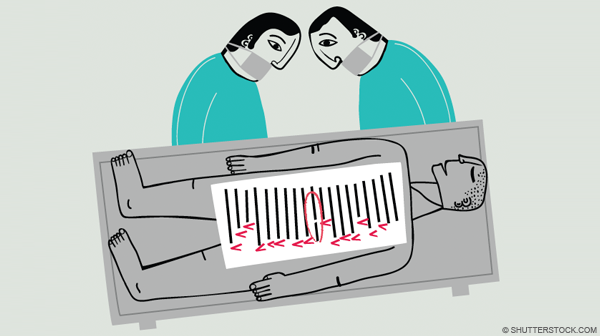
Steep Medicare spending at end of life, lengthy ICU stays for patients with chronic illnesses evidence of wide gap between what patients want and what they get
Many casually mention that a large percentage of Medicare dollars is spent near the end of life for problems that emergency physicians can’t fix. To have a meaningful conversation about end-of-life care and its associated costs, it’s important for every emergency physician to have a firm handle on the data. An astonishing 32 percent of Medicare spending is in the last two years of life for patients with chronic diseases and is often associated with frequent hospital admissions.1
Explore This Issue
ACEP Now: Vol 33 – No 01 – January 2014More than 90 million Americans live with at least one chronic illness, and seven out of 10 die from chronic diseases. Among the Medicare population, nine out of 10 deaths are due to nine chronic diseases:
- congestive heart failure
- chronic lung disease
- cancer
- coronary artery disease
- renal failure
- peripheral vascular disease
- diabetes
- chronic liver disease
- dementia
While 70 percent of patients say they prefer to die at home, 70 percent die in a hospital, nursing home, or long-term care facility.2 Though 80 percent of people say that if they were seriously ill, they would want to have a conversation with their doctor, only 7 percent of patients have had such a conversation.3
The number of days spent in the ICU in the last six months of life has been increasing despite patients’ wishes.4 These numbers point to a failure of our health care system and a gap between what patients want and what patients get.
Our health care system is back-loaded, with more and costlier care provided at the end of life for diseases we cannot cure than provided for keeping people healthy. Seventy-five cents of every health-care dollar is currently being spent on the last six months of a patient’s life.5 In the past, health insurance and providers have failed to offer preventive care and “wellness” treatment, opting instead for expensive, heroic end-of-life care that may not attend to a patient’s dignity, quality of life, or even autonomy.
There are two things that people fear more than death:6
- Suffering with physical pain
- Becoming incapacitated and remaining alive (“becoming a vegetable”)
References
- Dartmouth Atlas Project. The care of patients with severe chronic illness: an online report on the Medicare program. The Dartmouth Atlas of Health Care 2006. Available at: www.dartmouthatlas.org/downloads/atlases/2006_Chronic_Care_Atlas.pdf. Accessed November 26, 2013.
- Teno JM, Gozalo PL, Bynum JP, et al. Change in end-of-life care for Medicare beneficiaries: site of death, place of care, and health care transitions in 2000, 2005, and 2009. JAMA. 2013;309:470-477.
- Brownlee S. End of life care in California: you don’t always get what you want. California HealthCare Foundation website. Available at: www.chcf.org/~/media/MEDIA%20LIBRARY%20Files/PDF/E/PDF%20EOLWhatYouWant.pdf. Accessed November 26, 2013.
- Goodman DC, Esty AR, Fisher ES, Chang C. Trends and variation in end-of-life care for Medicare beneficiaries with severe chronic illness. Dartmouth Atlas of Health Care website. Available at: www.dartmouthatlas.org/downloads/reports/EOL_Trend_Report_0411.pdf. Accessed November 26, 2013.
- Majestic E. Public health’s inconvenient truth: the need to create partnerships with the business sector. Prev Chronic Dis. 2009;6:A39.
- Kass-Bartelmes BL, Hughes R, Rutherford MK. Advance care planning: preferences for care at the end of life. Rockville (MD): Agency for Healthcare Research and Quality; 2003. Research in Action Issue 12.
Pages: 1 2 | Multi-Page




No Responses to “Patients’ Wishes for End-of-Life Care Seldom Followed”